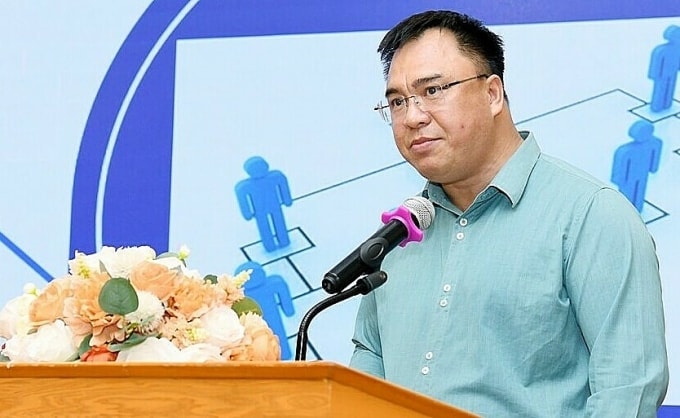Professor Nguyen Quoc Suu proposed not to separate provincial cities but to convert them into grassroots levels when building a two-level local government.

Morning of April 9, at the national scientific conferenceTwo-tier local government model: The role of the commune level - the new grassroots unitProfessor Nguyen Quoc Suu, Deputy Director of the Academy of Public Administration and Management, said that provincial cities are the product of long-term development. Dividing them into wards could destroy the driving force for socio-economic development.
"Thus, it is difficult to achieve one of the goals of streamlining the apparatus, which is to create momentum for socio-economic development," said Professor Suu, proposing to apply the same to cities directly under centrally-run cities such as Thu Duc (Ho Chi Minh City) and Thuy Nguyen (Hai Phong).
Mr. Le Thanh Dong, Secretary of the Hong Linh City Party Committee (Ha Tinh), supports the policy of abolishing the district level and rearranging the provincial and communal administrative units. However, the arrangement of urban administrative units needs to consider many specific factors such as high population density, separate requirements for socio-economic development, national defense and security, as well as the potential to attract investment.
"If an investment project is located in 2-3 wards, steps such as site clearance and related procedures will be more difficult than if the urban areas are not separated," he said.
In addition, many urban areas such as Sa Pa, Da Lat, Nha Trang, Vinh... have a rich tradition, culture, history and have established their brands, so "there needs to be a plan to arrange them in accordance with urban development".
According to the Law on Organization of Local Government, provincial cities and cities under centrally-run cities are defined as district-level administrative units. Currently, the country has 84 provincial cities and 53 towns, along with two cities under centrally-run cities, Thu Duc and Thuy Nguyen.
Avoid "uniformization" of local government
Professor Nguyen Quoc Suu assessed that Vietnam has implemented many reforms in the organization and operation of local governments over the past decade, focusing on restructuring the apparatus, decentralizing management and streamlining administrative units. However, these efforts are still formalistic and have not addressed the core of institutional reform, especially the issues of real decentralization and accountability.
Citing the organization of urban government in Ho Chi Minh City, Hanoi, and Da Nang, where the ward level no longer has a People's Council, Professor Suu commented that "this is only a change in form", while financial and personnel autonomy and people's participation have not been significantly improved. Similarly, the merger of districts and communes from 2019 to present, although aimed at overcoming the situation of "communes being too small, districts being too weak", if not accompanied by innovation in governance methods, financial mechanisms and public service provision organization, management efficiency will still not be improved.
According to Professor Suu, local governments currently lack independent institutional space and mainly act as administrative-technical levels to carry out orders from the central government. The lack of financial autonomy, the inability to select key officials, and unclear decentralization in public service management have limited the ability to adjust policies according to local needs, leading to stagnation and inflexibility of the state apparatus.
To overcome this situation in the process of eliminating the district level and building a two-level local government, Professor Suu proposed "not to uniformize" the government model but to move towards classifying localities according to function and actual conditions into three main groups.
Urban government with flexible management mechanism, centralized operation and provision of high-quality public services; rural government focusing on stabilizing the apparatus, decentralizing people's livelihood and developing agriculture, protecting the environment; and regional government applying the semi-autonomous model or the exclusive administrative area with specific mechanisms on budget, personnel and apparatus organization for key economic zones, industrial zones, and special border areas.
Professor Suu emphasized that the classification needs to be based on the standardization of institutional capacity, only when localities meet certain criteria on operational capacity, financial management and human resources will they be granted greater autonomy. This model "has been successfully applied in Indonesia and China".
TH (according to VnExpress)